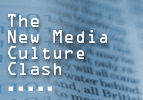



Moving beyond print
Moving beyond the realm of those structured expectations proves difficult for graduate students. As one of my consultants notes, by the time they reach PhD level courses, students tend to be “experts at putting together the twenty-page manuscript” (C34). Because the culture has normed the use of such a document, students often find it easier and faster to complete such an assignment. New media projects, on the other hand, are not yet a part of that culture (as evidenced in quantitative data gathered in my pilot study for empirical methods). Indeed, according to my consultant, such assignments are anxiety-laden, fear-inducing events.
As such, these alternative projects present their own set of challenges. As the same consultant explains, “You don’t all of a sudden not know how to get from page two to page three” when writing a paper (C33). The writer might be at a loss for the content (what does she/he need to say), but has a clear understanding of the mechanics of writing the essay itself (for example, linear formatting and the use of word processing software to generate the essay). However, in composing a new media project, technology may fail or the techniques for using software and hardware appropriately may be unfamiliar.
There are additional concerns in that students may be unsure how long a project will take to complete or what an equivalent level of work looks like in a new media format. Quite simply, faculty and graduate students lack the structured expectations to guide these practices. They have no settled framework with which to allay their fears. While the key factors discussed in this analysis can help, additional questions have begun to emerge.
Reifying print culture • Moving beyond print • Emerging questions • The discourse key • Works cited • Home